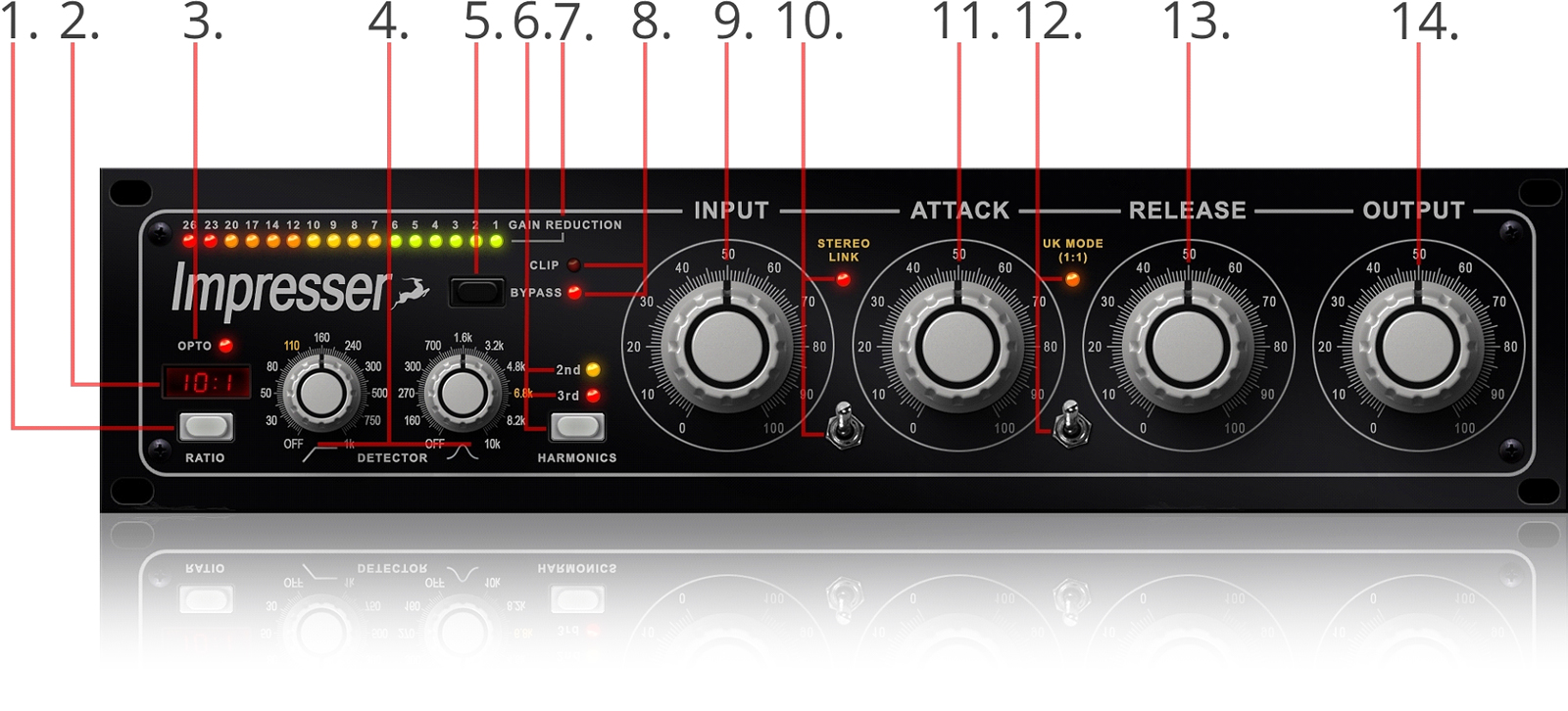7. Starting Points For Different Instruments
Here are some example settings for treating different instruments with the Impresser!
7.1 Vocals – Standard
Ratio: 6:1
Attack: 5
Release: 4
Apply 3dB to 17dB gain reduction
7.2 Vocals – Classic Compression
Ratio: 10:1 (Opto mode)
Attack: 10
Release: 0
7.3 Vocals – Aggressive Compression
Ratio: 6:1
Attack: 2.5 to 3.5
Release: 0 to 2
2nd Harmonics engaged
Apply 17dB to 20dB of gain reduction, which will be felt on louder passages only
7.4 Bass
Ratio: 4:1 to 6:1
Attack: 5
Release: 4
Use fast attack and release times to keep clacking sounds from pumping. Apply liberal gain reduction.
Try Opto mode
7.5 Electric Guitar
Start with a ratio of 6:1 and all knobs at noon. From there, apply fast attack and medium release times to smooth out the pick attack. To get rid of harshness in solos, play with the band-pass filter control to bring forth softer notes and sustain higher notes. Feel free to try Opto mode as well.
7.6 Acoustic Guitar
Ratio: 6:1
Input: 7
Attack: 2
Release: 5
Output: 7
7.7 Piano/Keys
Ratio: 6:1
Input: 5
Attack: 5
Release: 5
Output: 5
Start with these neutral settings, then lower the attack and try slightly increasing the release. Opto mode sounds good on piano, too.
7.8 Drums – Snare, Kicks, Toms
Ratio: 3:1 to 6:1
Input: 6
Attack: 5
Release: 5
Output: 6
⦁ Short release times bring out drum decay.
⦁ If crackling occurs, try longer attack and release times.
⦁ Try Opto mode for kick drums, with Attack on 10 and Release on 0.
7.9 Drums – Room Mics
Ratio: 20:1 or Nuke
Input: 10
Attack: 6
Release: 2.5
Output: 6
For a John Bonham type of larger-than-life sound, try setting Attack to 5, Release to 3, and applying up to 20dB of gain reduction. Feel free to add some grit with the 2nd and 3rd harmonics distortion as well.

